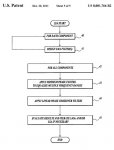Re: More to a measurement then the transfer function?
Hello,
I have been thinking quite a lot about transfer function measurements, specifically those capturing the crossover, EQ, and FIR processes taking place inside of a DSP. If I am viewing a transfer function (Magnitude and Phase) of a DSP process, does that show me everything that is going on? I know some manufactures implement horn reflection compensation through FIR processes. How would those manifest themselves inside a measured transfer function? Would you see a secondary arrival in the impulse response and need to window to that?
-Thanks
Dave
Hi Dave, I really am far to much of a noob when it comes to measurement, but i have been hitting it pretty hard lately...asking myself the same questions you pose...
Here's as much as I've been able to gather....please correct !
Starting with a snip from one of Dave Gunness' patents
http://www.fulcrum-acoustic.com/ass...ng-dsp-filters-improve-transient-response.pdf

If I understand the patent, blocks 40 and 41 are about finding driver resonances, horn reflections, etc,... that are NOT minimum-phase (IIR) fixable.
It appears Dave calls these driver specific fixes LMA's (Loudspeaker Mechanism Algorithms.)
I don't see how a transfer function can measure this, hopefully somebody can chime in.
I think an impulse response, along with a time sensitive spectrograph or something similar, could show it....
Blocks 42-45 seem to be about more well traveled technique. First use minimum-phase eq, either IIR or FIR replicated IIR.
Then, instead of IIR crossovers, use linear-phase crossovers. Then, keep iterating till your're happy.
I think Dave calls these steps LSA's (Loudspeaker System Algorithms).
To me, 42-45 are what we've been doing all along,....... only as suggested by the patent, crossover is now linear-phase via FIR;
and eq is still done via minimum-phase, but implemented with either FIR or IIR.
I think this tuning is the domain of the transfer function.
I've been having a lot of luck with 42-45, measuring with transfer function, and then generating FIR for both linear-phase crossover, and minimum phase eq.
What I Really want to learn, is
how to measure for blocks 40-41, and
then how to insert them into FIR generation.
I think that is what you're asking too... right?
Thx, Mark

